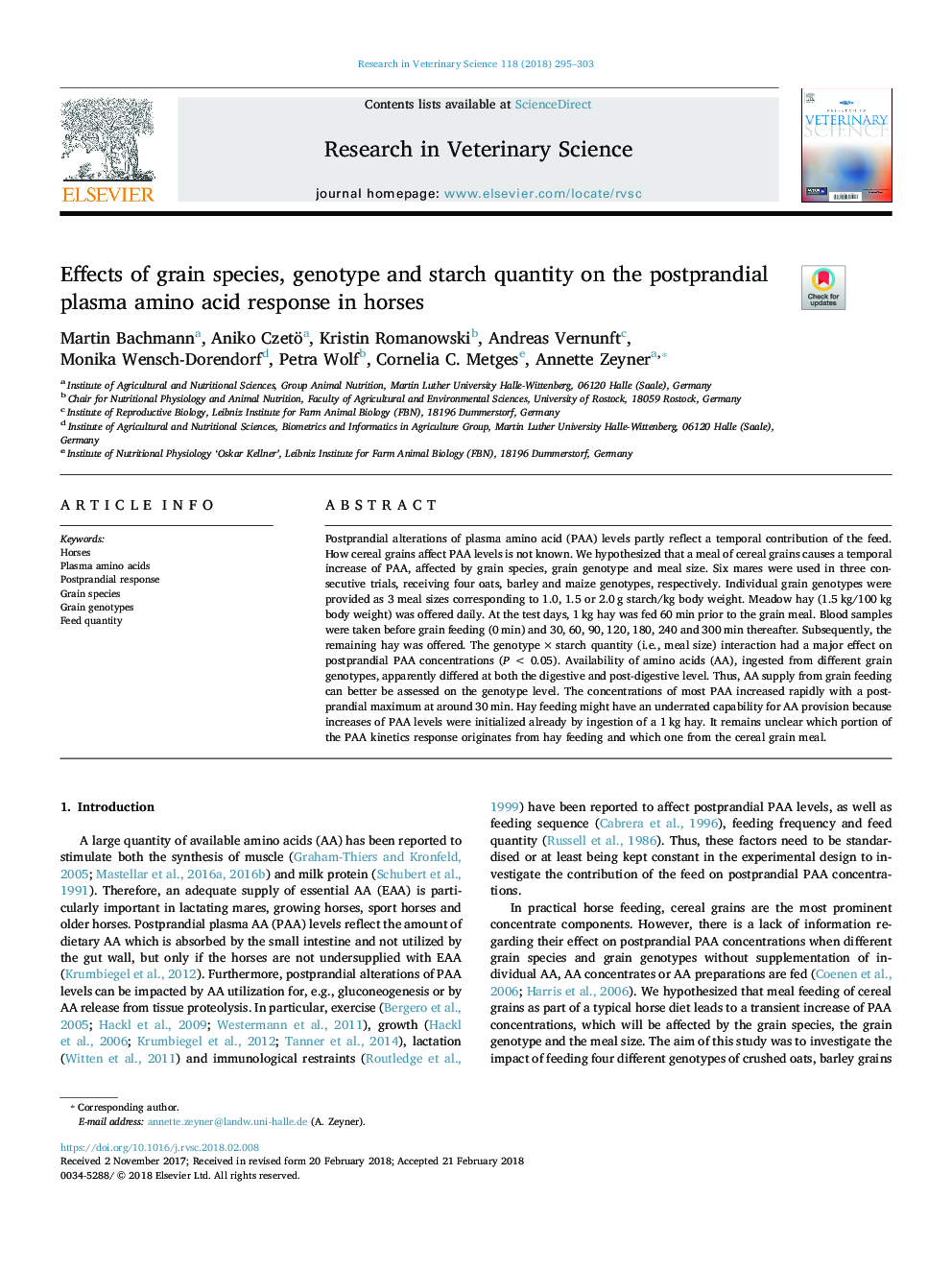| Article ID | Journal | Published Year | Pages | File Type |
|---|---|---|---|---|
| 8503965 | Research in Veterinary Science | 2018 | 9 Pages |
Abstract
Postprandial alterations of plasma amino acid (PAA) levels partly reflect a temporal contribution of the feed. How cereal grains affect PAA levels is not known. We hypothesized that a meal of cereal grains causes a temporal increase of PAA, affected by grain species, grain genotype and meal size. Six mares were used in three consecutive trials, receiving four oats, barley and maize genotypes, respectively. Individual grain genotypes were provided as 3 meal sizes corresponding to 1.0, 1.5 or 2.0â¯g starch/kg body weight. Meadow hay (1.5â¯kg/100â¯kg body weight) was offered daily. At the test days, 1â¯kg hay was fed 60â¯min prior to the grain meal. Blood samples were taken before grain feeding (0â¯min) and 30, 60, 90, 120, 180, 240 and 300â¯min thereafter. Subsequently, the remaining hay was offered. The genotypeâ¯Ãâ¯starch quantity (i.e., meal size) interaction had a major effect on postprandial PAA concentrations (Pâ¯<â¯0.05). Availability of amino acids (AA), ingested from different grain genotypes, apparently differed at both the digestive and post-digestive level. Thus, AA supply from grain feeding can better be assessed on the genotype level. The concentrations of most PAA increased rapidly with a postprandial maximum at around 30â¯min. Hay feeding might have an underrated capability for AA provision because increases of PAA levels were initialized already by ingestion of a 1â¯kg hay. It remains unclear which portion of the PAA kinetics response originates from hay feeding and which one from the cereal grain meal.
Related Topics
Life Sciences
Agricultural and Biological Sciences
Animal Science and Zoology
Authors
Martin Bachmann, Aniko Czetö, Kristin Romanowski, Andreas Vernunft, Monika Wensch-Dorendorf, Petra Wolf, Cornelia C. Metges, Annette Zeyner,
